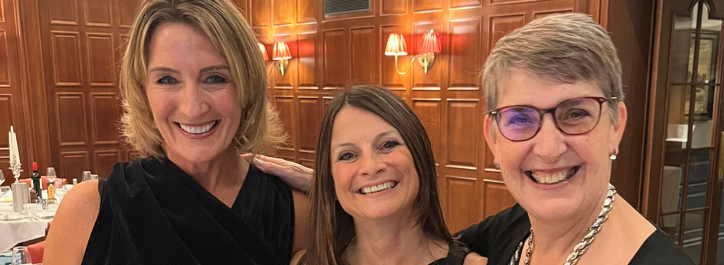Raising awareness about stress in the workplace
Every April the Stress Management Society holds Stress Awareness Month. It aims to raise awareness about the causes and cures of stress – something that’s never been more important as we live through the continuing COVID-19 pandemic, the war in the Ukraine and cost-of-living crisis. Here’s how we’re helping Pure people deal with stress, as well as our top tips for doing the same at your workplace.
The theme for this year’s Stress Awareness Month is ‘community’. It’s about how belonging can help reduce stress. According to the website, community is:
‘… much more than just a group of people. It’s about having a sense of belonging and connection to others and feel supported and accepted by them … People who are more socially connected to family, friends or their community are happier, physically healthier and live longer, with fewer mental health problems …’
Feeling like you don’t belong at work can lead to isolation and loneliness, both of which can have a really negative impact on mental health. This can lead to depression and anxiety, problems sleeping and low self-esteem.
What causes stress at work?
The Health and Safety Executive (HSE) defines stress as ‘the adverse reaction people have to excessive pressures or other types of demand placed on them’. So it’s when employees feel they can’t cope with the tasks they’re being given at work, for example, because they don’t have the skills or training. The HSE breaks these down into six areas:
- demands – workers can’t cope with the demands of their job
- control – they can’t control the way they do their work
- support – they don’t have the help or information they need
- relationships – they have bad relationships at work, for example, they’re being bullied
- role – they don’t fully understand their role or responsibilities
- change – they’re having trouble dealing with a change at work, like a new manager or a restructure.
When you add to this outside pressure like the ones we mentioned above, it’s no surprise that some people might be struggling to cope. And according to the Stress Management Society, this is in no small part down to community – or rather, a lack of it:
‘Unfortunately, people in Western societies tend to have a higher incidence of poor mental health than those in developing countries. This is because developing nations have a stronger sense of community than the West, and consequently they don’t struggle with mental ill-health to the same degree.’
As many of us are now choosing to spend more time working from home, that sense of isolation is bound to be growing. But the good news is that there are lots of easy ways to build a sense of community at work.
How to create a workforce community
Improve employee engagement
Try to create opportunities for employees to get together and be engaged in the organisation. That can be as simple as organising more team meetings and team-building activities. Celebrating your people’s milestones – like work anniversaries, birthdays, marriages, babies, etc. – can really bring people together as well. Don’t forget about team members who work from home either – try to bring them to the office (or elsewhere) regularly. And if they can’t do that, always give them the chance to join remotely so they feel part of your culture and team.
You can use our Best Employers Eastern Region survey to keep an eye on exactly how engaged your employees are with your organisation.
Focus on wellbeing
Good relationships are vital for mental wellbeing. They help build a sense of belonging, and give people the chance to share experiences and give each other emotional support. Encourage your employees to set up community-type activities that bring them together in more relaxed settings – like lunchtime walking clubs or group exercise sessions. Helping people connect in a different setting is a sure-fire way to improve wellbeing and collaboration, and reduce stress.
Get your leaders on board
None of this will work if your managers aren’t also walking the walk. They don’t need to do much – just simple things like encouraging people to work healthy hours, take time off and have proper lunch breaks (and doing the same themselves).
What we’re doing at Pure
We’re working hard to build a sense of community both within and across our four offices.
We encourage communication and collaboration
We ask all our teams to regularly communicate through weekly and monthly team meetings, one-to-ones with managers, quarterly reviews, and so on. We try to make sure that people who work flexibly come into the office periodically to focus on business development activities. We use our intranet to improve communication, to encourage healthy competition and internal social engagement, and also for more fun things like celebrating birthdays, anniversaries and achievements.
We train mental-health first aiders
We recently ran a course for new and existing mental health first aiders. Their role is to be a point of contact for any employees who are struggling with their emotional or mental well-being. This could be anything from just having a chat, all the way through to getting them some outside assistance.
Mental-health first aiders are really valuable for getting early help to someone who might be on the way to developing a serious mental health issue.
We build our teams in new settings
Every quarter we take a day for our teams to get together away from the office, and just be with each other somewhere else (this month we headed off to WildTracks near Newmarket for quad biking, archery and go-karting). That’s because we want our people to feel like members of our Pure community. And we know that taking things into a different setting can increase collaboration and communication, and build a real sense of belonging.
Got some ideas for stress relief?
We would love to hear what your organisation is doing. Feel free to contact us to tell us more.



